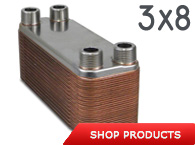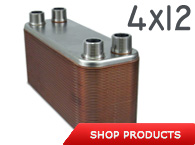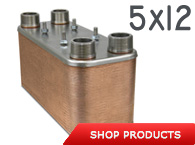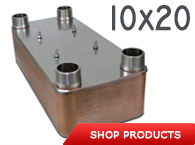Brazed Plate Heat Exchangers
|
The compact 3x8 models of brazed plate heat exchangers are common for small applications including DIY beer & wort chilling, small radiant heating projects, small domestic water heating projects, oil pre-heating (SVO, WVO, bio-diesel) and others within 15 GPM flow range. |
4x12 models of brazed plate heat exchangers are most widely used for medium size residential heating projects, including outdoor wood boiler/furnace installations, snow melting systems, larger size radiant heating projects and other systems that require flow rates of up to 35 GPM. |
These models of brazed plate heat exchangers are suitable for large size residential and light commercial/industrial applications, including hydronic heating, radiant heating, hydraulic oil cooling, brewing, outdoor wood boilers/furnaces and others with flow requirements of up to 60 GPM. |
Among the largest in the industry, 10x20 brazed plate heat exchangers offer heat transfer solution mainly for commercial and industrial markets. Compact and low-maintenance, these units offer superior resistance to corrosion, high temperatures and a wide range of chemical solutions. System Connections: 1.5”, 2”. Models Available: 10-plate through 120-plate. LEAD TIME is 4 weeks to manufacture. PRICE DOES NOT INCLUDE NEW IMPORT TARIFFS. |
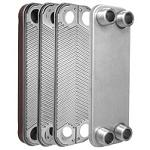 |
Technology: A brazed plate heat exchanger consists of multiple corrugated steel plates stacked one on top of the other and vacuum brazed together. This design creates a series of parallel, non-intersecting channels through which the two liquids can flow without ever coming in contact with each other. Being separated only by a steel plate, the liquids move in close proximity to each other allowing for thermal energy exchange to occur. |
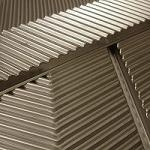 |
Design: To increase heat transfer area of the brazed plate heat exchanger without increasing its size, the channel plates are formed with corrugated surface known as herring bone pattern. During the assembly process, every other channel plate is rotated so that herring bone patterns are facing the opposite directions. Whether applications calls for counter-flow or co-current flow of fluids through the brazed plate heat exchanger, this design helps to achieve optimal flow and liquid distribution through the channels with minimal pressure drop. |
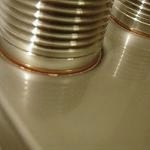 |
Features:
|
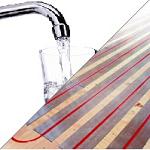 |
Applications:
|




